From CERN Bulletin: The collider of the future?
The recent ILC-CLIC meeting (see two recent Director's Corner about the meeting and about Jean-Pierre Delahaye joining the Executive Committee for more information) was also covered by CERN's internal newsletter Bulletin. We feature the article here today.
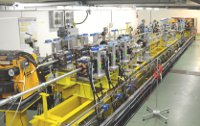
A view of the two beam lines in the CLIC experimental hall. |
The International Linear Collider (ILC) and Compact Linear Collider (CLIC) studies both call for cutting-edge technologies. At first glance they may appear to be in competition, but they are in fact complementary and have a common objective – namely to propose a design, as soon as possible and at the lowest possible cost, for the linear accelerator best suited to taking over the baton of physics research at the high-energy frontier after the LHC.
Read more...
|
 |
|
|
 |
Upcoming meetings, conferences, workshops
Lepton Photon 09
Hamburg, Germany
17-22 August 2009
14th International Conference on RF Superconductivity (SRF2009)
Berlin, Germany
20-25 September 2009
2009 Linear Collider Workshop of the Americas (ALCPG09)
The University of New Mexico, Albuquerque, New Mexico, USA
29 September - 3 October 2009
Upcoming schools
International School of Physics "Enrico Fermi" (SIF)
Radiation and particle detectors
Varenna, Villa Monastero, Italy
20-25 July
Linear Collider Physics School 2009
Ambleside, England
17-23 August 2009
Fourth International Accelerator School for Linear Colliders
Beijing, China
7-18 September 2009
|
|
|
GDE Meetings calendar
View complete ILC calendar
|
|
|
 |
3-D silicon technology project draws together industry and research for ILC
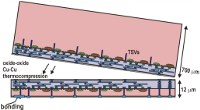
The bonding of two electronic tiers using the oxide-oxide Cu-Cu thermo-compression technique employed by Tezzaron. |
The International Linear Collider had more than a dozen circuit pixel-detector technologies to choose from for their vertex detectors. Now, they can choose from many more design options thanks to a ground-breaking partnership among national laboratories, universities and industry.
Read more...
-- Andre Sulluchuco |
 |
|
|
 |
From Eureka! Science News
6 July 2009
Physical reality of string theory demonstrated
This is the first time that a calculation based on string theory has been published in Science, even though the theory is widely known
Read more... |
|
From Science Centric
6 July 2009
A galaxy as particle accelerator
It is one of the largest among the giants: With two to three billion times the mass of our sun, the galaxy Messier 87 dominates the Virgo cluster.
Read more... |
|
From NASA
3 July 2009
NASA's Fermi Telescope Probes Dozens of Pulsars
Fermi is the first spacecraft able to identify pulsars by their gamma-ray emission alone.
Read more... |
|
From Science Daily
1 July 2009
New Class Of Black Holes Discovered
The finding in a distant galaxy approximately 290 million light years from Earth is reported today in the journal Nature.
Read more... |
|
 |
|
|
 |
|
arXiv preprints
0907.0917
Measurement of Higgs Branching Ratio at ILC
0907.0527
Testing Gaussianity in the WMAP data of OT foreground reduced map
0907.0525
Measurement of Heavy Gauge Bosons in Little Higgs Model with T-parity at ILC
0907.0524
Analysis of Higgs Self-coupling with ZHH at ILC
0907.0190
Precision Measurements of the model parameters in the Littlest Higgs model with T-parity
|
|
 |
Improvements in high-gradient ILC SCRF cavities
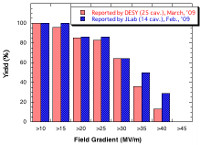
Recent results on cavity yields from JLab and DESY approach our TDP-1 goal of 50% yield at 35 MV per metre |
Developing high-gradient superconducting radiofrequency (SCRF) nine-cell cavities is one of the primary goals of our global R&D programme. Soon after we initiated the Global Design Effort (GDE) R&D and design programme for the International Linear Collider, we set the ambitious goal of 35 Megavolts (MV) per metre as our gradient. If we succeed, we plan to set an average operating gradient of 31.5 MV per metre for the 14560 cavities mounted in the 1680 cryomodules of a 500-GeV ILC. Major efforts towards high-gradient cavities are underway in the Americas, Asia and Europe and we have recently made good progress that makes us believe our goals are within reach!
Read more...
-- Barry Barish
Director's Corner Archive |
 |
|
|
 |
Accelerators everywhere!
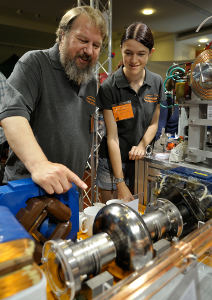
A single-cell niobium cavity was one of the many exhibits that showed that accelerators are 'everywhere: from the Big Bang to curing cancer'. In one of 25 stands of the Royal Society's Summer Exhibition — a popular event by the UK's national academy for science that attracted more than 5000 visitors in a week — a team of accelerator experts from labs and universities across the UK showed how exciting, useful and versatile the big machines are. More info: www.summerscience.org.uk/09/ Images: Christian Mrotzek, DESY.
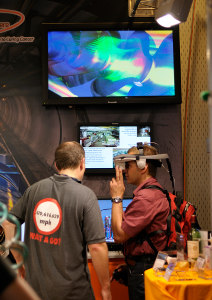
|
|

